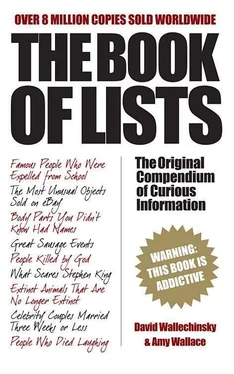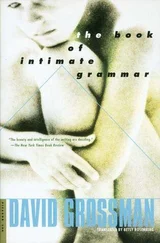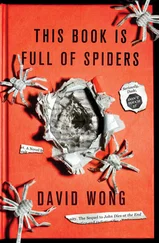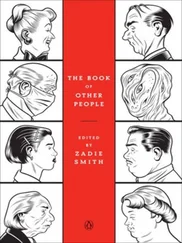7. THE NEEDLE (1992)
The Needle is in the Lemon Mountains of East Greenland. Four of us — Jim Lowther, Rob Ferguson, Graham Little and myself — were flown in by ski plane to land on a covered glacier and then had three weeks of superb climbing on these spectacular granite peaks, making a series of first ascents. The best of the lot was a route up a peak that we called the Needle. It looked a bit like the South West Pillar of the Drus. I climbed it with Graham Little. He led the first pitch off the glacier up a steep wall and led through up an open groove that just went on and on. I think it was one of the best pitches I’ve ever climbed. It was steep but possible to keep just in balance by bridging, beautiful grey rock with small and subtle holds, reasonable protection, but no sign of a belay ledge and the groove ran out into an overhang at about 40 metres. There were some small holds out on the face. They didn’t really seem to go anywhere but there was no choice, I embarked upon them and they took me onto a shallow ramp leading out to the left. Friction climbing, no runners, increasing rope drag and fear. This led into a deep cut groove — Graham from below, yelling no more rope — and I was on a ledge with a crack for an anchor. I let out a whoop of total exhilaration, relief and delight.
The climb went on and on — there were harder pitches that Graham led — and eventually, after 17 hours of climbing, we stood on top of the Needle and gazed around us at a panorama of huge glaciers and rocky peaks, most of them still unclimbed. Other than Jim and Rob, who were on another peak, the nearest human being was some 200 miles away.
8. SEPU KANGRI RECCE (1996)
We flew over an incredible range of mountains in 1982 on our way from Chengdu in southwest China to Lhasa. I guessed correctly that none of them had ever been climbed. In the summer of 1996 my old friend Charlie Clarke, doctor on most of my major expeditions, and I set out to find the highest mountain of the range. All we had was the photograph taken from the air in 1982 and a photograph and very localised map from a book of Tibetan mountains compiled by the China Tibet Mountaineering Association. The only map we could obtain in Lhasa was a roadmap of the whole of Tibet. With that and our interpreter Pasang, we set out in a big pick-up truck for our mountain range, three days’ hard driving to the northeast of Lhasa. This took us to the mouth of a valley, at the end of which we were told was a big snow mountain. It proved to be a peak called Sepu Kangri, which we discovered was a holy mountain rising above a lake. Four families lived in the valley, tending their yak and sheep. They were to become good friends.
Charlie and I walked to good viewpoints in our effort to find a route up our mountain and then drove over 100 miles to make an approach on foot from the other side, hitching a lift on ponies for part of the way with a group of Nomads. The grass was lush and green, rich in wild flowers. Sepu Kangri from the south was even more impressive than it had been from the north.
We felt like the early Himalayan pioneers. It was a wonderful journey of discovery.
9. DANGA II (2000)
The richness of an experience depends so much on the people we share it with. I had always wanted to share with some of my closest family the joy of standing on top of an unclimbed peak and experiencing, for the first time ever, the 360º view from its summit. I did this in the year 2000 with my eldest son Daniel, my brother Gerald and my nephew James. It wasn’t a difficult or indeed a very high mountain — I didn’t want it to be, for neither Daniel or James were experienced mountaineers and anyway, when you adventure with your nearest and dearest, it pays to be cautious.
Danga II was 6,190 m. high, close to Kangchenjunga, the third-highest peak in the world. The climb was straightforward but the view from the summit was magnificent; most important, however, was sharing that joy with people I love.
7 NON-BOXERS WHO TOOK ON THE CHAMPIONS
LORD BYRON (1788–1824), English poet
Byron sparred with John ‘Gentleman’ Jackson, the former bareknuckled champion, in the poet’s Bond Street rooms. Both men wore ‘mufflers’ (mittenlike gloves used for sparring in the early days). The poet boxed in a dressing gown, Jackson in knee breeches and a shirt. Byron, with his legendary temper, was reputedly a tough customer in the ring.
HESSIE DONAHUE ( fl . 1890s), US housewife
John L. Sullivan, world heavyweight champion from 1882 to 1892, invited Hessie and her husband, a boxing instructor, to join his entourage, which was staging boxing exhibitions in theatres around the country. As part of an act they worked out, Hessie, wearing boxing gloves and dressed in a blouse and bloomers, would climb into the ring after Sullivan had disposed of his male challengers, and the two would go at it. During one of their sparring sessions, Sullivan inadvertently hit Hessie in the face, and she countered with a right to the jaw that sent him to the canvas for a full minute. The audience was so delighted that Hessie and Sullivan decided to make a ‘knockout’ part of their regular routine.
PAUL GALLICO (1897–1976), US author
Gallico, author of The Poseidon Adventure , was a cub reporter in 1923, assigned to Jack Dempsey’s camp at Saratoga Springs prior to the heavyweight champion’s title bout with Luis Firpo. Against his better judgement, Gallico asked Dempsey to spar with him for one round. It was, for Gallico, a vivid and somewhat terrifying experience as he was ‘stalked and pursued by a relentless, truculent professional destroyer’. He never saw the punch that flattened him; he was aware only of an explosion in his head, and the next instant he was sitting on the canvas grinning stupidly. He struggled to his feet and finished the round propped up in a clinch with Dempsey, absorbing those taps to the neck and ribs that as an observer had seemed so innocuous to him.
J. PAUL GETTY (1892–1976), US entrepreneur
The billionaire oil magnate met Jack Dempsey in 1916, when Dempsey was an up-and-coming young fighter, and the two became good friends. Getty, who kept fit in the fully equipped basement gym in his parents’ mansion, used to spar with Dempsey. Dempsey once claimed that, in an altercation over a girl, Getty knocked him out with a left uppercut — the only time Dempsey was ever KO’d by anyone.
ERNEST HEMINGWAY (1899–1961), US author
During visits to Hemingway’s Havana home, former heavyweight champion Gene Tunney would occasionally allow himself to be talked into sparring bare-fisted with the writer, especially if the two had just downed a thermos of frozen daiquiris. Once Hemingway, in a rambunctious mood, tagged Tunney with a hard punch. Incensed, Tunney feinted his friend’s guard down and then faked a menacing punch to the face, as he issued a stern warning: ‘Don’t you ever do that again!’
HUGH LOWTHER (1857–1944), British sportsman
Outraged that John L. Sullivan had never fought Jem Smith, the English heavyweight titleholder, the 5th Earl of Lonsdale challenged Sullivan to a bout. According to the earl, he took considerable punishment from the hard-hitting champion — they fought bareknuckle in those days — but dropped Sullivan in the sixth round with a solid blow to the solar plexus. Though at least two people verified Lowther’s version, Sullivan’s memoirs make no mention of the fight.
GEORGE PLIMPTON (1927–2003), US journalist and author
One of Plimpton’s early experiments in ‘participatory journalism’ was taking on Archie Moore, the former light-heavyweight champ, in January 1959. The fight lasted only three rounds, during which Moore cuffed Plimpton around gently, bloodying his nose. The referee called it a draw. Moore was asked how long it would have taken him to polish off his opponent had time been a factor. Moore told Plimpton, ‘’Bout the time it would take a tree to fall on you, or for you to feel the nip of the guillotine.’
Читать дальше












